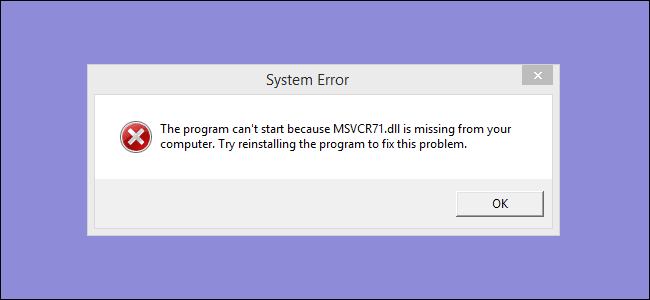

- HOW TO DELETE .DLL FILES HOW TO
- HOW TO DELETE .DLL FILES UPDATE
- HOW TO DELETE .DLL FILES FULL
- HOW TO DELETE .DLL FILES CODE
- HOW TO DELETE .DLL FILES WINDOWS
At first after I removed the entries, they were added back automatically. I got the winlogon/notify, CLSID/control sets, etc infected.

Then I go to the registry (Windows Start > Run > regedit) and Search for the trojan program names (click My Computer, menu Edit > Find / Ctrl-F, then repeat with Find Next / F3). I ran the removal tools again in Safe Mode (F8 when booting up). I am not sure which of the actions was needed but just share with you all. Now I seem to have finally got rid of it. I tried to edit the registry listed in the Symantec page but couldn't find the infected entries. It reported no Vundo found but I have the notify popup kept coming. My laptop got infected by Trojan Vundo and I couldn't rid it completely with the Symantec removal tools at first. I've never heard of them before and the interface was pretty child-like. PS - I promptly deleted Reanimater when I was done. ldcore.dll, oppnt.dll, and rsp?.dll are all finally gone. Re-run spyware scan to remove anything potentially still left from the ad programs ldcore.dll loads. You'll have to let this run 2 or 3 times rebooting in between (it guides you through it).Ħ. I did like however, that it continues to rerun itself on boot until all infections are gone. Here's why: When it finds something, it uses the pre-OS enviornment after a reboot (think checkdsk /f) to actually do the deleting so there's no access denial. This is important as it's integral to ldcore.dll regenerating itself.Ĥ.
HOW TO DELETE .DLL FILES UPDATE
Update your virus scan and anti-spyware programs of choice.ģ. Ldcore.dll is gone! All the posts above with the random dll names and the google search interference trace back to affiliate.exe which loads ldcore.dll and a host of random gernerated. If you want to undo the removal, you can perform it by typing "regsvr32" without the /u key, just type "regsvr32 " to undo the changes. If the DLL was unregistered successfully, a confirmation message will be displayed. In the directory where you want to remove the DLL, type "regsvr32 /u " and press the "Enter" button. If you want to display the contents of the directory, use the "dir" command.
HOW TO DELETE .DLL FILES FULL
Type "cd" in order to change the current directory, press the "space" button, enter the full path to the DLL file and press the "enter" button on your keyboard. In the field, type "cmd" and press the "OK" button.Īfter opening the Command Prompt window, locate the exact DLL path as shown on the screenshot below. Press the "Start" button on your taskbar and click on "Run" to start the "Run" tool. To start unregistering DLL files, you will need to follow these steps: As a precautionary measure, please back up important files and set a System Restore point (click Start > All Programs > Accessories > System Tools > System Restore, and follow the on-screen instructions) or run a spyware check with a trusted anti-spyware program to automatically detect spyware. If you unregister the wrong DLL file, your computer may crash and important data may be lost. Warning: Unregistering spyware DLL files is difficult and risky.
HOW TO DELETE .DLL FILES HOW TO
Learn how to remove spyware DLL files from your computer. There are plenty of other programs available that can help you identify and remove unwanted DLLs, but Regsvr32 is the most common.
HOW TO DELETE .DLL FILES WINDOWS
To remove a specific DLL, you should use Regsvr32 (Regsvr32.exe) to register and unregister DLL files which is already built in your Windows operation system's package. This results in DLLs being left behind that can recreate the malicious program on reboot. But be aware the uninstall utility will assume that certain files are shared and it will have no way of knowing which other programs use them or whether these programs are present on your machine. Most applications come with an uninstall program that will remove the unwanted DLL files. If you're really serious about removing unwanted DLL files, make sure you use Windows Add/Remove programs first ( how to use Add/Remove programs). Most DLL files are essential for the running of your programs but there are other malicious programs, such as browser hijackers and browser plugins, that are usually made up of DLL files that can alter your system settings to allow attackers gain access on your computer. Why is it important to remove malicious DLLs? So instead of all the coding being built into the program, it uses a particular DLL file that, with a simple call, can execute the operation for it. The benefit of having DLL files is that they don't get loaded into random access memory (RAM) along with the main program, which saves up space in RAM. A DLL file can be used by several programs at the same time.
HOW TO DELETE .DLL FILES CODE
DLL (Dynamically Link Library) is an executable file that permits programs to share code to perform one or more predefined functions.


 0 kommentar(er)
0 kommentar(er)
